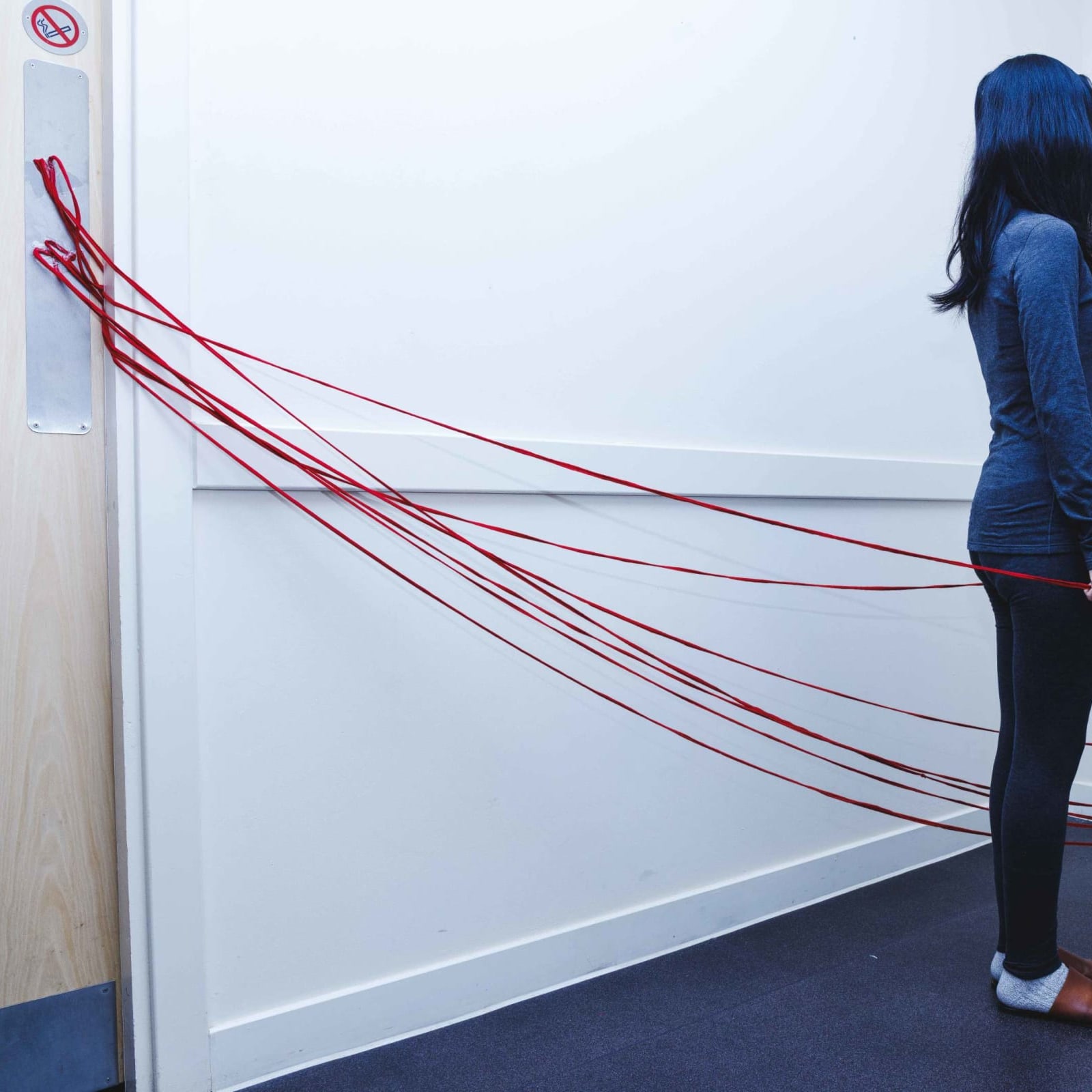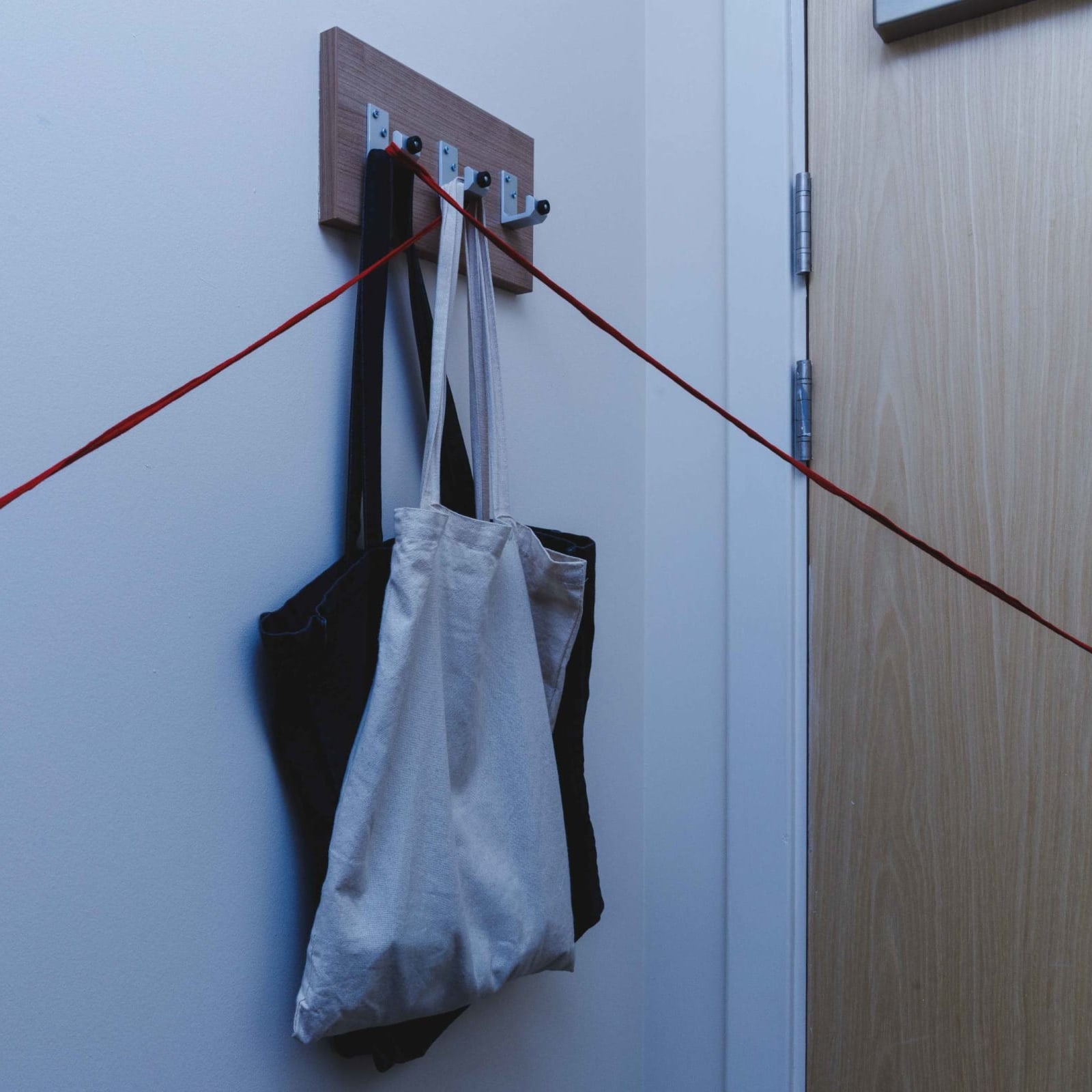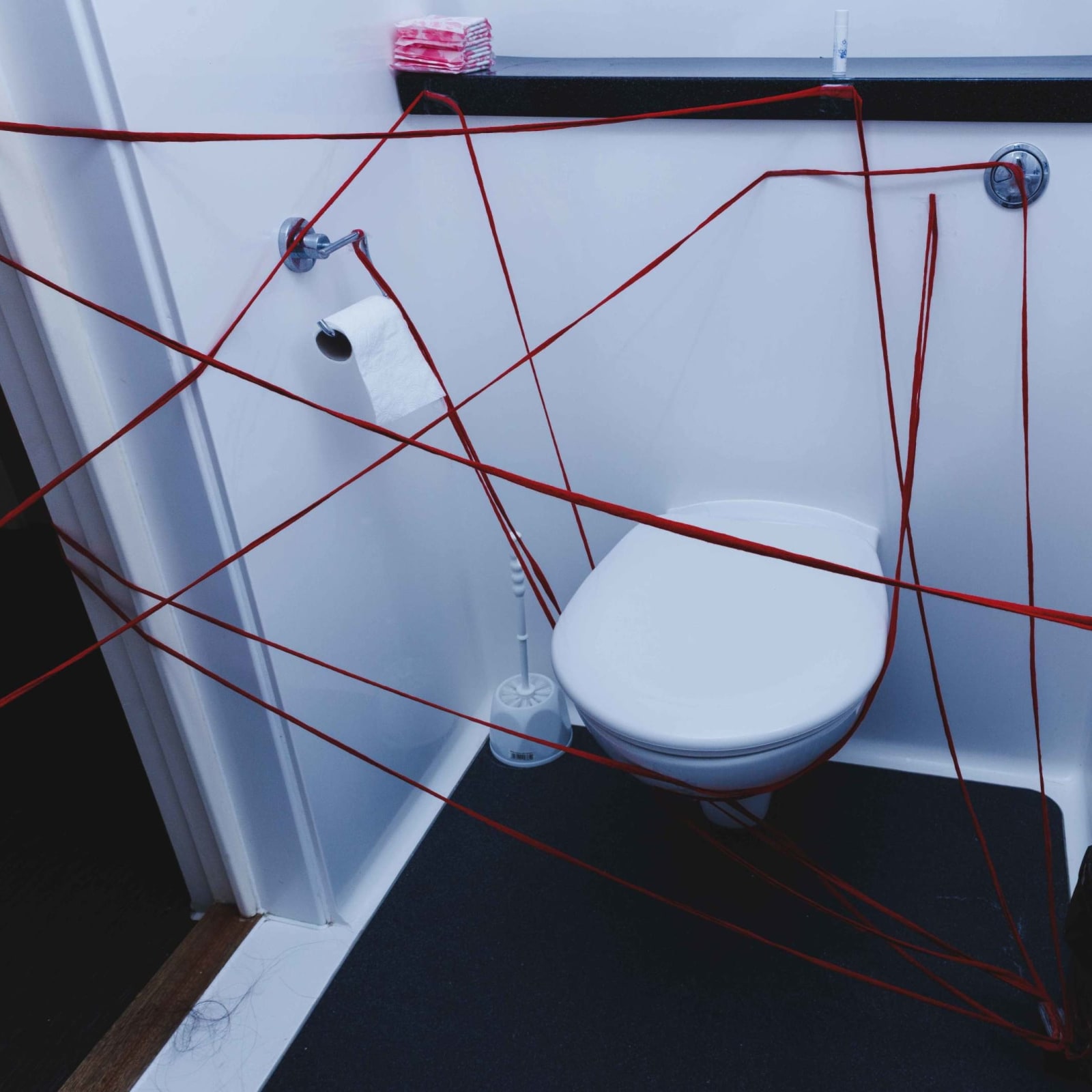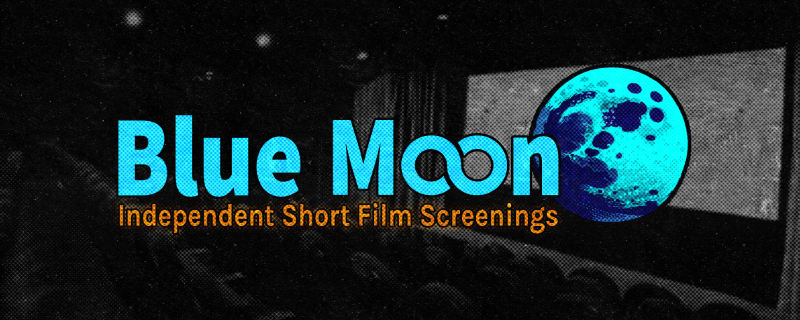

Hold/Held (Photography, 2021)
The inability to accept the disconnection from other is further explored in the relationship between the body and domestic space in Hold/Held.
The idea of getting in touch with the space all the time is inspired by Rebecca Horn’s body extension work especially Finger Gloves.[1] I use a yarn to connect all the area in the domestic space my body once touch through my daily movement, so that my body will not be disconnected from the space in any time or experience. Yarn is used for weaving, which relates to connecting well. The use of yarn is also influenced by my reading about Mary Klages’ lecture “Jacques Lacan” that is related to Freud’s idea:
In a case study which appears in Freud’s Beyond the Pleasure Principle, Freud talks about his nephew, aged about 18 months, who is playing a game with a spool tied with yarn. The kid throws the spool away, and says “Fort”, which is German for “gone.” He pulls the spool back in, and says “Da,” which is German for “here.” Freud says that this game was symbolic for the kid, a way of working out his anxiety about his mother’s absence.
The visualization of the trace of my movement is also inspired by The Fold by Deleuze:
To have or to possess is to fold, in other words, to convey what one contains ‘with a certain power.’[2]
The movement is similar to folding, which consists of one’s experience or existence physically. Domestic space is a container to body. The sense of unity or non-separation is also a sense of being contained. The attachment between the movement to the space shows the desire of being united with the container. However, the more attached one’s existence is to the container through time, the less functional the container becomes, influenced by Valie Export’s We are prisoners of our own making.[3] I am not able to go out with the yarn because it cannot survive outside the container. This attachment makes me unable to enter the society. At the end, as the yarn gets used up, the body cannot move forward without letting go of the connection or go backward because it is to unfold the trace, which is to erase one’s experience or existence and break past connections eventually. The inability to accept the loss makes me unable to become a being, inspired by The Fold by Deleuze:The true opposite of the self is not the non-self, it is the mine; the true opposite of being, that is, the having, is not the non-being, but the had.[4]
[1] ‘How Rebecca Horn expanded the boundaries of the human body’, Sandra Beate Reimann https://www.artbasel.com/news/rebecca-horn-museum-tinguely-koerperfantasien-art-basel [Accessed 18 July 2021].
[2] Gilles Deleuze, The Fold: Leibniz and the Baroque (London: Continuum, 2003).
[3] Roswitha Mueller, ‘Screen Embodiments: Valie Export’s ‘Syntagma’’, Discourse, vol. 13, no.2 (1991), < https://www.jstor.org/stable/41389185> [Accessed: 18 July 2021] p. 44.
[4] Deleuze, p. 125.










Credit
I worked on this projectEva Wang China
1+ years experienced Masters graduate from Glasgow School of Art, who excels at creating innovative digital photographs. Currently seeking an entry level graduate role to establish a photography career.
- Admin
- Photographer




